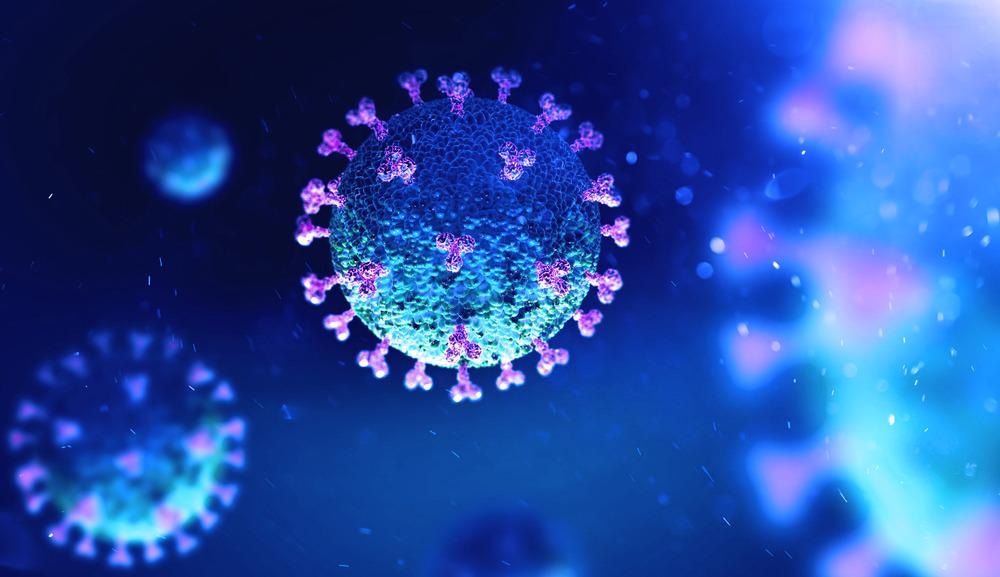Surface-to-human transmission of diseases is a critical issue. Designing surfaces that can adequately inactivate Covid-19 and other pathogens is of key concern to researchers working in the materials science and healthcare industries. Writing in the Chemical Engineering Journal, a team led by L.T. Liu has presented research into antimicrobial stainless steel that can successfully inactivate pathogens within a few hours.

Study: Anti-pathogen stainless steel combating COVID-19. Image Credit: Andrii Vodolazhskyi/Shutterstock.com
Surface Transmission of Pathogens: A Critical Health Issue
Worldwide, infectious diseases affect the health of millions, causing seventeen million deaths annually, according to the World Health Organization. Additionally, they cause economic upheaval due to lost labor hours and healthcare costs. Communicable diseases are a global crisis of significant proportions.
Whenever a surface is touched, pathogens can be transferred to it from infected individuals, which are then transferred to others, spreading the infection. Door handles, elevator buttons, countertops, extensively used surfaces in hospitals are all touched by multiple individuals every day, facilitating the need to clean them regularly with antimicrobial chemicals.
However, there is still the risk of insufficient cleaning routines that do not effectively inactivate pathogens, especially in domestic settings.
Studies have shown that SARS-CoV-2, the virus that causes COVID-19, can stay active on surfaces for several days. Whilst the cases of COVID-19 surface transmission are lower than direct droplet transmission from infected individuals coughing and sneezing, this is still causing concern and demonstrates the need for effective antimicrobial strategies for extensively used surfaces.
The CDC has said that surface transmission is a critical infection route for SARS-CoV-2.
Aside from SARS-CoV-2, other common infective agents that can linger on surfaces include influenza, MRSA, and E. Coli. Destroying these pathogens before they can infect someone touching a surface is a critical health concern, especially in healthcare settings where patients are exposed to them every day.
Antipathogenic Stainless Steel Surfaces: A Better Method for Control of Surface Transmission
Stainless steel is widely used as a material for surfaces in healthcare and domestic settings. The material is workable, displays superior mechanical properties, is corrosion resistant, and easy to clean but, as mentioned above, there is still a risk of transmission if cleaning routines are not properly implemented. Additionally, current, commonly used commercial grade stainless steel does not possess antimicrobial qualities.
Additionally, studies have shown that SARS-CoV-2 displays a strong affinity for stainless steel surfaces, remaining stable and viable for 2-3 days. Therefore, research into antipathogenic stainless steel has received significant attention recently as a critical method for controlling surface-to-patient transmission of infectious diseases and, consequently, outbreaks.
Further Reading - BioInteractions: Multiple Novel Antimicrobial Medical Materials
Copper and silver are two popular inorganic elements that display antimicrobial properties. These elements are especially attractive for inclusion in antipathogenic stainless steel surfaces due to their ability to inactivate multiple viruses and bacteria as well as having low cytotoxicity for animals and humans. To investigate the development of stainless-steel surfaces that incorporate these antimicrobial elements, a study has been published in the Chemical Engineering Journal.
Investigating the Development of a Superior Antipathogenic Stainless Steel Surface
Silver nanoparticles, composites, copper, brass, and copper alloys have all been investigated in studies due to their excellent antimicrobial properties. Pure copper has the highest reported antimicrobial efficiency and has been shown to inactivate SARS-CoV-2 and H1N1 Influenza A viruses.
However, the cost, low strength, and reductions in anti-corrosive properties have impeded its use as an additive for antimicrobial stainless steel. Some studies have used copper to manufacture antimicrobial stainless steel via ion implementation and surface coating methods, but drawbacks include limited coating thickness and the service life of the coatings being affected by the damage. Developing low-cost stainless steel with inherent antimicrobial properties is urgently needed.
Previous studies have demonstrated superior antibacterial qualities of stainless steel which includes copper, but to date, little focus has been given to its antiviral properties. To investigate this, powder metallurgy technologies have been introduced to introduce copper into stainless steel. Traditional steel casting can induce “copper brittleness” which makes it an insufficient manufacturing process.
The research in the Chemical Engineering Journal has demonstrated the development of a stainless steel/copper composite that inactivates between 99.75% and 99.99% of viable SARS-CoV-2 viruses on the surface within 3-6 hours. Additionally, the antipathogenic stainless steel presented in the research displayed enhanced activity against the Influenza virus and E. Coli. By including copper particles throughout the material’s matrix, antimicrobial activity remains even when the stainless steel is damaged.
The Future
Surfaces that can inactivate pathogens are urgently required in healthcare and domestic settings to control future outbreaks of infectious disease. The study presented here demonstrates the fabrication of a low-cost copper/stainless steel material that can be used as healthcare surfaces, elevator buttons, and in a multitude of other applications. Widespread use of this antimicrobial stainless steel has enormous potential.
Further Reading
Liu, L.T et al. (2021) Anti-pathogen stainless steel combating COVID-19 [online] Chemical Engineering Journal | Sciencedirect.com. Available at: https://www.sciencedirect.com/science/article/pii/S1385894721053572
Disclaimer: The views expressed here are those of the author expressed in their private capacity and do not necessarily represent the views of AZoM.com Limited T/A AZoNetwork the owner and operator of this website. This disclaimer forms part of the Terms and conditions of use of this website.